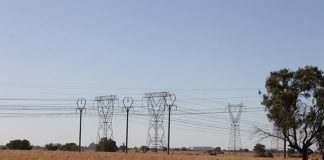On 21 February at Pannar’s Crop Extravaganza near Delmas, Mpumalanga,
Ernst Janovsky, head of agriculture at First National Bank, gave two
sessions of about 100 farmers each, insight into agricultural market
dynamics and explained the predicted structural changes and
management actions needed to be globally competitive.
You should be asking yourselves where South Africa is going to be in five to ten years. Agriculture stands at a point of structural change that could move in any direction at any time. You must be ready for this as a few of you may be adversely affected, but those who manage the change stand to benefit considerably.
Two major considerations are violence and Aids
The government is attempting to address unacceptable crime levels by training cadets at the Pretoria and Hammanskraal Police Colleges. They may need community assistance. As Aids decimates the working class, many farmers question if there will be a local market for their produce with fewer mouths to feed. For the next five to ten years, this should not be a problem due to the influx of workers from over our borders. But in year eight, you will start to experience the negative effect of Aids on the demand for your products.
Managing requires that you know the status of your workers so that you can take measures to prolong their lifespan and maintain their level of productivity.
Free market
The free market system, which results in price volatility and short-term policies, affects you profoundly. You are subject to an open-ended short-term price, mortality free market system. The prices of imported maize are affected by international production trends, farming subsidies, exchange rates and import and export tariffs over which we have no control. South African farmers face a 60% price exposure to the outside world and, by implication, are global players facing global competition. We have very little control over pricing levels and tend to be price takers. Prices range between import and export parity depending on local supply and demand, and this causes increased price volatility.
You must know exactly what is going on in the international market at all times, since this impacts directly on the domestic maize price. Price stability can be improved, however, if new internal markets are developed to ensure prices track import parity prices.
Market environment
You need to understand the technology that drives the market to manage your farming business. Cellphones, computers and the internet have provided almost instantaneous data dissemination leading to a ‘here-now’ culture. The world is becoming a smaller place. Ever increasingly rapid transportation responds to just-in-time (JIT) demands. Advances in storage technology will obviate seasonality as you will not be able to distinguish between a week-old apple and one plucked 18 months ago. Enhancements appeal to both time restrictions and taste where packaging, branding and presentation will all play a key role in consumer selection. For example, an attractively packaged, pre-cooked chicken is more likely to be bought than an uncooked chicken on the shelf next to it.
Productivity will also be increasingly improved through GMO or natural gene selection.
Economic outlook
You must take economic indicators into consideration when managing your farming enterprise. The global economy rebounded to new heights after 9/11, although Japan was initially challenged by deflation. The EU also continues to struggle, mainly due to the strength of its currency.
Africa’s performance has improved substantially with per capita expenditure rising to a new 30-year high. It is expected that it will continue to grow. Inflation is predicted to remain within the prescribed Reserve Bank’s target range of 3% to 6%, mainly due to the strength of the rand. World inflation is low and interest rates remain relatively stable with further upward potential should fuel prices continue rising. The balance of payment indicators reveal that the exchange rate should strengthen. Interest rates will remain relatively high compared to inflation in a bid to draw capital into South Africa. In relation to other currencies, the rand will remain relatively strong, favouring imports.
Maize outlook
It is expected that maize prices will continue to strengthen over the medium term internationally, due to increased demand for biofuels. This will be driven by fossil fuel prices, rather than supply and demand by the livestock industry. In South Africa, due to increased production under irrigation, maize surpluses will continue to build up over the short term placing pressure on prices. Should the production of biofuels be successful, a new market will be created for surplus stocks. This will result in lower feed prices as byproducts are released into the livestock feed market. However, this will be a disadvantage to the poultry industry worldwide, which is unable to utilise byproducts from the maize-to-ethanol industry. – Peter Hittersay |fw












